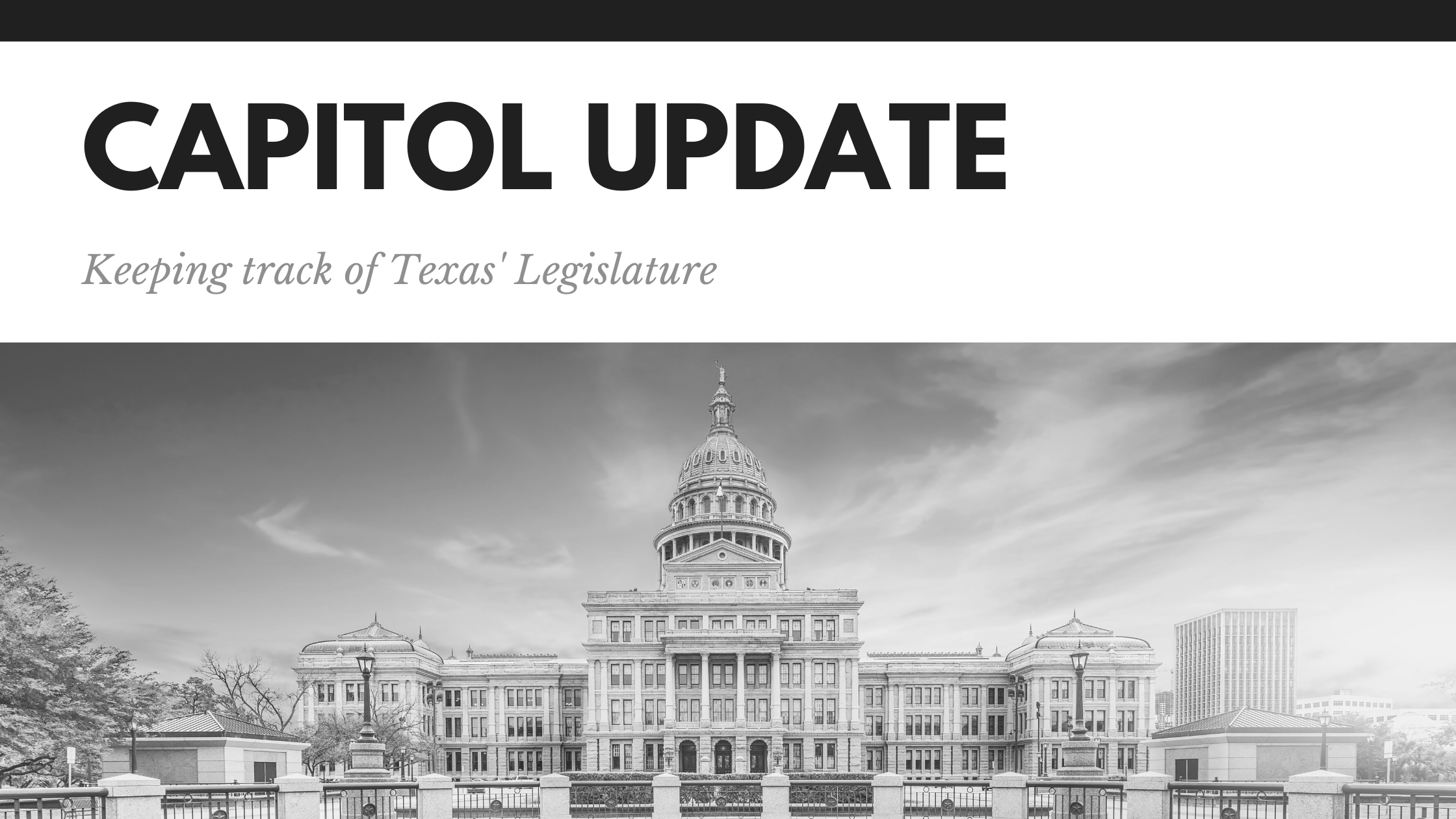Mar
03
House Committee on Pensions, Investment, and Financial Services members met on March 1 to discuss the Employee Retirement System and the Teacher Retirement System, among other topics.
The full agenda is available here. For a video archive of the hearing, visit here.
The following is intended to provide an overview of the discussion and is not a verbatim transcript. This report only focuses on the Employee Retirement and Teacher Retirement systems.
Opening Comments
- Committee Chair, Rep. Giovanni Capriglione, and Vice Chair, Rep. Stan Lambert – Thank the House Speaker for their appointments.
Employees Retirement System
Porter Wilson, Executive Director of ERS
- Presented an overview of the agency
- The agency manages four pension plans with ERS; three are prefunded
- State employees contribute 9.5% of their salary to the plan; new employees contribute 6%
- The state contributes 9.5%, agencies contribute .5%
- There are about 130,000 state employees that contribute to the pension plan
- The number of people that are not contributing to the plan has grown over the last five years
- 70% of the state's workforce comes from five state agencies
- Last session, all three pre-funded pension funds were set to run out of money
- Coming out of the last session, SB 321 helped ERS fund and is now in good shape
- The two other funds were not addressed and are not where they need to be
- Starting last September, the state created a cash balance plan
- With the introduced version of the GR Bill, the combined projected savings are $7B
- All higher education agencies have access to health benefits except for the UT and A&M systems
- Have not had to ask for an increase to health benefits since 2017
Teacher Retirement System
Brian Guthrie, Executive Director of TRS
- Gave an overview of the TRS
- Agency manages three separate trust funds
- The biggest is the teacher retirement trust fund, which has 1.5M retirees
- Provide two healthcare programs, one for retirees, and one for active members
- The fund serves 675,000 members, and it is not co-mingled
- The board decides everything that goes into the pension fund; it has nine trustees
- Five must-have investment experience; three are direct appointments by the board; two are from SBOE
- The remaining four are active members of the system
- The legislature is responsible for designing a plan for the fund
- Half of the plan's assets are global equities, and it's the 5th largest plan in the nation
- The agency uses a long-term return assumption of 7%
- The fund pays about $13B in benefits a year; October was the first time paying $1B in a month
- There is no COLA associated with the funds
- The legislature addressed the COLA some last session with supplemental payments
- There is a new contingency rider introduced in the GR bill that addresses COLA for retirees
- TRS had a negative return of 6%; the prior year, it had an increase of 24%
- If the legislature has a plan structure in mind to address benefit enhancement, TRS can model it
- Given the size of the plan, a 1% increase would cost $1.1B to finance; the number is scalable
- The last COLA provided was in 2013; it was not prefinanced and was done through the fund; the state is still paying for the benefit enhancements and will be for the next 10 years
- Recommend upfront payments since they are prefinanced and do not have a large effect on the fund
- Explained the function of the Employment After Retirement program (EAR)
- Last session, there was legislation passed that created a 3-strike system for EAR; since then, no one has gotten three strikes
- The agency is aware of the issues with the program; e.g., surcharge it's a new charge for districts
- There are two health care funds; the first is active care, second is TRS care
- State only has half of the healthcare membership in active care
- Districts can elect to have their own, e.g., Austin, San Antonio, and Houston provide their own plans
- During the last session, the federal covid relief package provided $250 million, and the Gov. provided $350 million; the money was used to offset premium increases in active care
- This one-time funding caused premiums to be artificially depressed
- The state is now in the position to have to increase premiums by 20-30% to finance the program
- TRS has a plan that would increase premiums annually by 7-9% over six years; this would put premiums back where they need to be
- SB 1444 last session allowed districts to have the option to opt out of the program
- No longer have one statewide premium; it's now regionally based (regional ratings)
- Changes in 2017 made by the legislature made it so supplemental funding for TRS is not needed
- It could be three more sessions before TRS care needs more funding
- Leo Wilson - I left TRS care and am now in ERS. Do I have a year to opt-in?
- Yes, there is a window for people that opted out because of the changes made
- Leo Wilson- If you didn't leave for that reason, would I be able to opt back in?
- Yes
FOLLOW TEXPERS ON FACEBOOK, TWITTER, AND LINKEDIN FOR THE LATEST NEWS ABOUT TEXAS' PUBLIC PENSION INDUSTRY.
Share this post:


